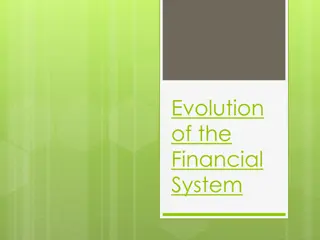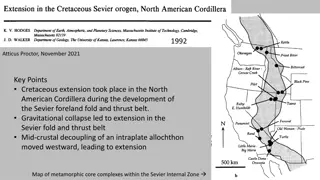Development Initiatives in Post-Independence India: A Glance into Extension Education and Rural Progress
Explore the historical developments in extension education and rural development in India post-independence, highlighting initiatives like the Grow More Food Campaign, Etawah Pilot Project, Nilokheri Project, and Adarsh Sewa Sangh aiming at enhancing food production and rural upliftment.
Download Presentation

Please find below an Image/Link to download the presentation.
The content on the website is provided AS IS for your information and personal use only. It may not be sold, licensed, or shared on other websites without obtaining consent from the author.If you encounter any issues during the download, it is possible that the publisher has removed the file from their server.
You are allowed to download the files provided on this website for personal or commercial use, subject to the condition that they are used lawfully. All files are the property of their respective owners.
The content on the website is provided AS IS for your information and personal use only. It may not be sold, licensed, or shared on other websites without obtaining consent from the author.
E N D
Presentation Transcript
UNIT-02 (EXTENSION EDUCATION AND DEVELOPMENT) Dr. Puspendra Kumar Singh Department of Veterinary & Animal Husbandry Extension Education, BVC
Extension Education and Development 3rdYear, VAHEE
Topics covered Post development programmes Independent rural
Stage II: Post-Independence Era (1947-52) Grow More Food Campaign 1947 Etawah pilot project Col. Albert Mayor- 1948 Nilokheri Project S.K.Dey 1948 Adarsh Sewa Sangh Col. Shitole
Grow More Food Campaign (1947) India s first organized effort to increase food production Enquiry committee (Chairman V.T.Krishnamachari) Committee recommendations:- Formation of development blocks Revenue officer as development or extension officer Technical officers Village level worker for every 5 10 villages Commission prescribed CD & rural extension
Etawah Pilot Project (1948) Col. Albert Mayor in Mehewa village (Etawah district, UP) Pilot project in rural planning & development Regarded as forerunner of the CD projects Concept of Multipurpose Village Level Worker Objectives: - To see what degree of production & social improvement initiative & cooperation could be obtain from a compact area. To see how quickly results could be achieved and To see whether results achieved/permanent/reproducible Achievements: - Approach:- Villagers participation Educative & persuasive Successful & pattern was accepted Demonstration method was used to convey new ideas. Finally merged with NES block
Nilokheri Project (1948) S.K.Dey Nilokheri (Punjab) Also c/a Mazdoor Manzil Objectives: - To rehabilitate 7000 displaced persons from Pakistan To attain self sufficiency in all essential aspects of life Achievements: - Agro-industrial economy for the future pattern of development of rural area.
Adarsh Sewa Sangh Col. Shitole Pohri (Gwalior) 232 villages Rural reconstruction society formed at each village Published monthly journal Rural India devoted to planning & community projects Objectives: - To increase per capita income
Major limitations of the above pre and post independence program Individualized, Isolated, discontinuous attempts Lacking Govt. backing & financial support Staff - inadequate, inexperience and untrained Plans, programs & organizations were lacking / weak Lack of parallel programs of supplies, services, guidance & supervision Proper methods & skills of approach not fully realized Research & evaluation was lacking Limited co-ordination with other development depts. Lack of people involvement in planning & execution
Stage III: CD & NES Era (1952 - 60) Community Development Programme-1952 National Extension Service -1953 Community Development Block- 1954 Panchayat Raj - 1957
Community Development Programme (CDP) in India Result of GMF Enquiry report & Etawah Project First major rural development programme & first organised effort at rural reconstruction, launched after independence in 2nd October 1952. An instrument to transform the social and economic life of the village community. Initially, it covered 55 projects with a wide range of programmes for developing agriculture, animal husbandry, rural industries, education, housing, rural communication etc. Objectives:- To achieve socio-economic transformation To design administrative organization
National Extension Service Inaugurated on Oct. 2nd, 1953 Operational unit NES block converted into CD block Design to provide the essential basic staff and a small fund for the people to start the development work on the basis of self help
Community Development Block (1954) A block administrative unit of planning & development CD block comprises about 100 villages 60,000 to 70,000 people Area 400-500 sq. km Created post of BDO supported by 8 extension officers from dev. depts. CD (method) and NES (agency) The main lines of activity - Agriculture and related matters, Irrigation, Communications, Education, Health, Supplementary employment, Housing, Training, Social Welfare
Stage IV: Intensive Agricultural Development Era (1960 onward) Agricultural Universities 1960 Scheme for technological development: I. A. D. P. (Intensive Agriculture district programme) - 1960-61 (Package Programme) I. A. A. P. (Intensive Agricultural Area Programme ) - 1964 I. C. D. P. (Intensive Cattle Development Programme) 1964-65 H. Y. V. P. (High Yielding Variety Programme) 1966-67
Scheme for development with social justice S.F.D.A. (Small Farmers Development Agency ) - 1970-71 M.F.A.L. (Marginal Farmers And Agricultural Labourers Development Agency ) - 1970-71 D.P.A.P. (Drought Prone Areas Programme) - 1970-71 Desert Development Program 1973-74 T & V (Training & Visit System) - 1974 I.C.D.S. (Integrated Child Development Service) 1974 Minimum needs programmes -1977
Scheme for development with social justice I. R. D. P. (Integrated Rural Development Programme) - 1978-79 T.R.Y.S.E.M. (Training of Rural Youth for Self-Employment) 1979 N.R.E.P. (National Rural Employment Programmes (NREP) 1980 D.W.C.R.A.(Development of women and children in Rural Areas) 1982 N.A.E.P. (National Agriculture Extension Project) - 1983 Rural landless employment guarantee program 1983 ToT programme - 1985
Scheme for development with social justice Employment & Training for Women Program 1987 Women s Development Corporation 1986-87 J.R.Y. 1989 Local Area Development Project of MP 1990 Rashtriya Mahila Kosh 1992-93 Mahila Samriddhi Yojana 1993
Scheme for development with social justice Small Farmers Agri Business Consortium (S.F.A.C.) 1994 Distance Learning 1994-95 Indira Mahila Yojana 1995 Social Economic Program 1995-96 S.G.S.Y. 1999 Jawahar Gram Samriddhi Yojana 1999 Agro-clinic Yojana 2000 Sampoorna Gramin Rojgar Yojana 2001
Scheme for development with social justice M.W.S. (Million Wells Scheme) 1988-89 National Watershed Development Project 1991 P.U.R.A. (Providing Urban Amenities to Rural Areas ) 2004 N.R.E.G.A. (National Rural Employment Guarantee Act, 2005) Mahatma Gandhi National Rural Employment Guarantee Act", MGNREGA 2006
ICAR frontline Extension programme National demonstration Project (NDP) -1965 Krishi Vigyan Kendra (K. V. K.) 1974 Operational Research Project (O.R.P.) 1979 Lab to Land programme (L.L.P.) - 1979 Technology Assessment and Refinement-Institute Village Linkage Programme (TAR IVLP) 1995 Technology Mission on Oilseeds (T. M. O.) 1986 Technology Mission on Dairy Development (T.M.D.D.)- 1989
ICAR frontline Extension programme National Agricultural Research Project (N.A.R.P.) 1979 National Agricultural Technology Project (N.A.T.P.) 1998 National Agricultural Innovation Project (N.A.I.P.) 2006 National Agricultural Development Programme (N.A.D.P.)/(RKVY) 2007























